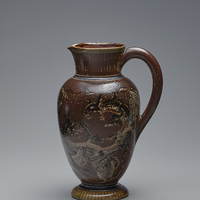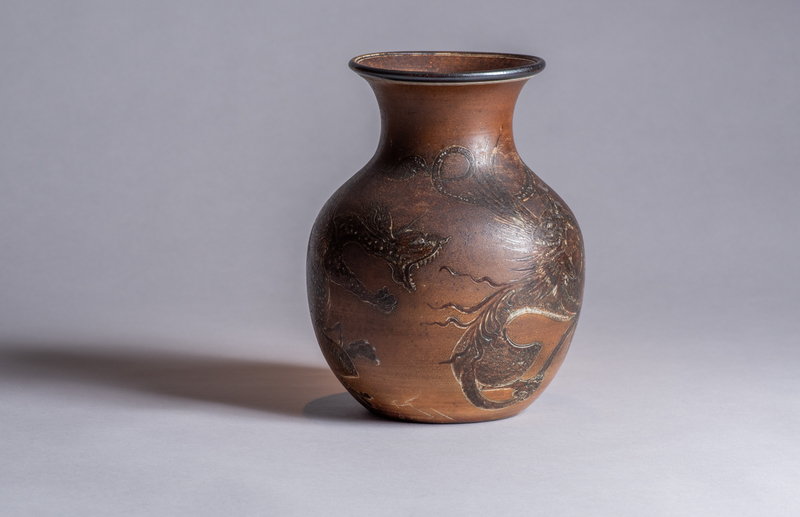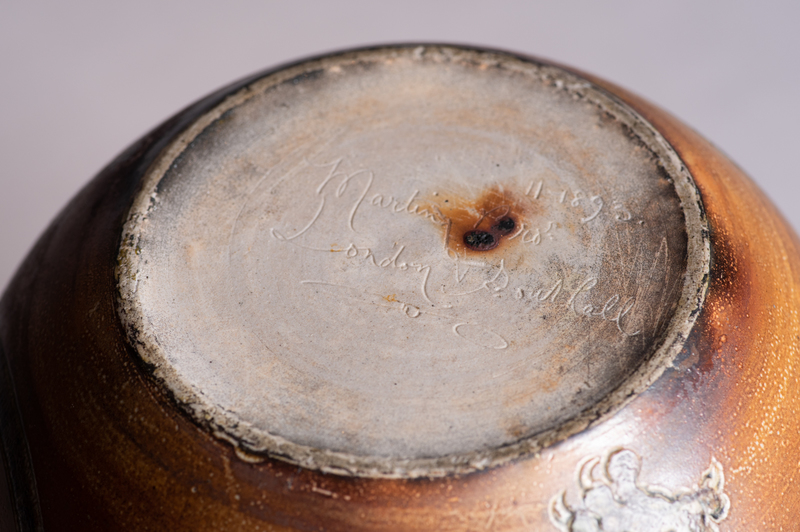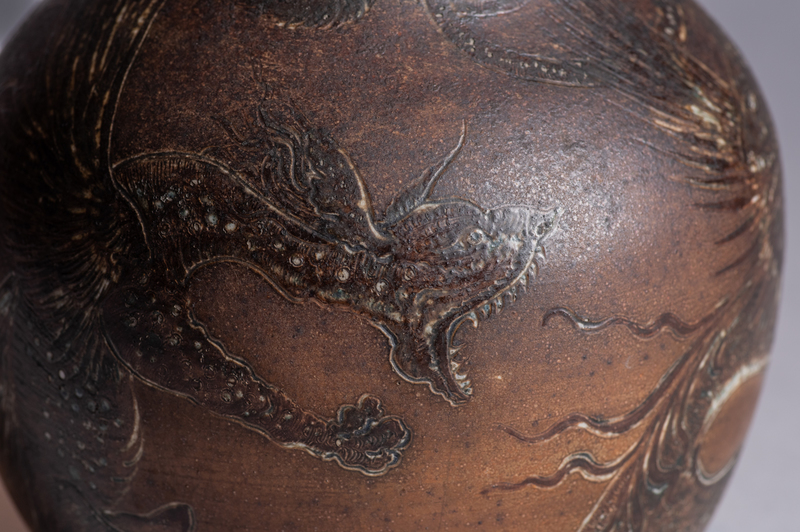Vase
Item
Title
Vase
Creator
R. W. Martin and Brothers
Date
1893
Dimensions
8 1/2 inches
Medium
Salt glazed stoneware
Credit line
Collection of Drs. Cynthia and Timothy McGinn
Marks
Inscribed on base: "11 1893 / Martin Bros. / London + Southall"
Description
It seems unlikely to be coincidental that both Gustav Stickley and his brother Leopold owned stoneware vessels by the Martin Brothers, both dating to 1893, and both decorated with dragons. While this is the only piece of Martin Brothers pottery that is associated with Gustav Stickley, Leopold was an avid collector of the firm's wares. Leopold's collection, which was included in the auction of his wife Louise's estate in 1982, contained numerous examples of their pots. Given Leopold's interest in the pottery, it seems likely that Leopold was the source of this vase.
Another possibility is that Gustav introduced Leopold to the pottery's productions, as this vase could have been purchased on one of his early European trips (1895, 1896, and 1902-03). Despite the technical and aesthetic regard with which the firm's work is held in today, the pottery was not widely advertised for sale in the United States in the late-19th and early-20th centuries and had limited impact on the American Arts and Crafts aesthetic .
Derived from Asian decorative arts, the incised dragons swirl across the body of the vase, mouths agape, eyes wide open, and teeth bared: these are fierce creatures. Touches of cobalt blue and bare spots devoid of glaze help to define the otherwise rust-colored beasts and allow one to more easily pick out the spots, scales, and feathers that adorn them. This is a fantastically violent representation for domestic ceramics and perhaps helps explain the relatively short-lived duration of this motif on Martin Brothers' wares, most of which are dated to the early 1890s. More typical of the firm's output than these fighting dragons were pots with medieval-style dragons and floral flourishes that dovetailed nicely with the emphasis on Gothic art and design found throughout the Arts and Crafts movement.
During the late 19th century, the three-toed dragon was most associated with Japanese depictions, as Charles Gould noted in his book Mythical Monsters (London: 1886): "In Japan... [the dragon] is invariably figured as possessing three claws, whereas in China it has four or five, according as it is an ordinary or an imperial emblem."
Another possibility is that Gustav introduced Leopold to the pottery's productions, as this vase could have been purchased on one of his early European trips (1895, 1896, and 1902-03). Despite the technical and aesthetic regard with which the firm's work is held in today, the pottery was not widely advertised for sale in the United States in the late-19th and early-20th centuries and had limited impact on the American Arts and Crafts aesthetic .
Derived from Asian decorative arts, the incised dragons swirl across the body of the vase, mouths agape, eyes wide open, and teeth bared: these are fierce creatures. Touches of cobalt blue and bare spots devoid of glaze help to define the otherwise rust-colored beasts and allow one to more easily pick out the spots, scales, and feathers that adorn them. This is a fantastically violent representation for domestic ceramics and perhaps helps explain the relatively short-lived duration of this motif on Martin Brothers' wares, most of which are dated to the early 1890s. More typical of the firm's output than these fighting dragons were pots with medieval-style dragons and floral flourishes that dovetailed nicely with the emphasis on Gothic art and design found throughout the Arts and Crafts movement.
During the late 19th century, the three-toed dragon was most associated with Japanese depictions, as Charles Gould noted in his book Mythical Monsters (London: 1886): "In Japan... [the dragon] is invariably figured as possessing three claws, whereas in China it has four or five, according as it is an ordinary or an imperial emblem."
Relation
Item sets
Linked resources
Filter by property
| Title | Alternate label | Class |
|---|---|---|
 Pitcher Pitcher |
Object |



